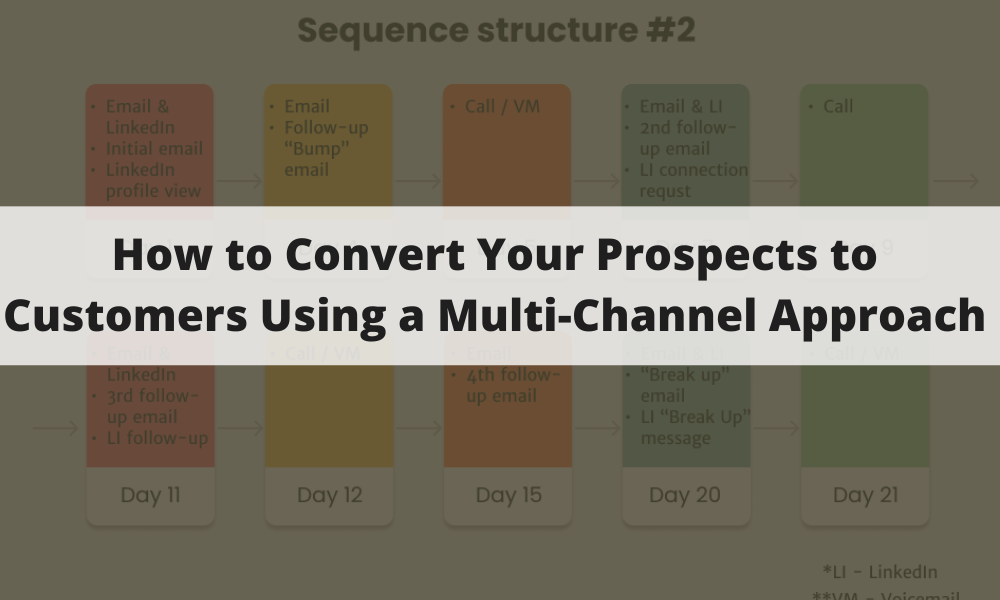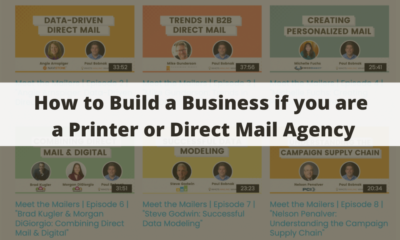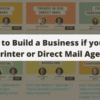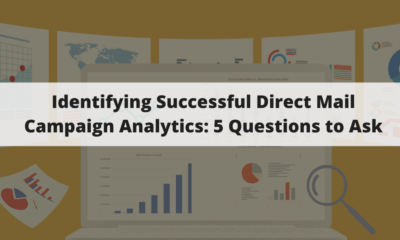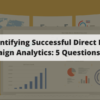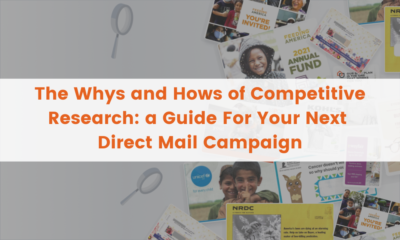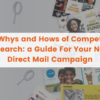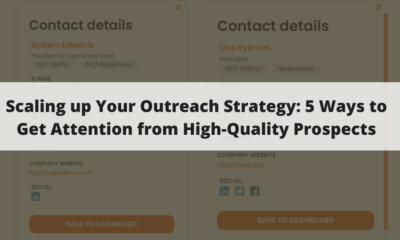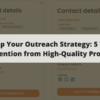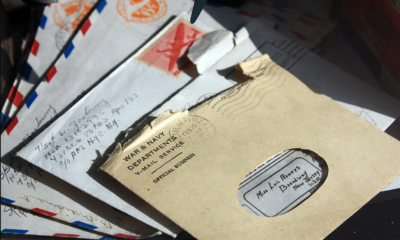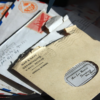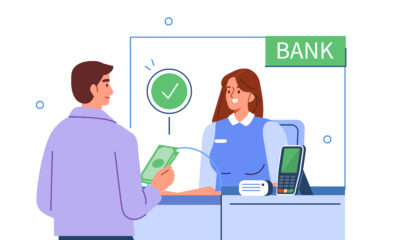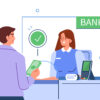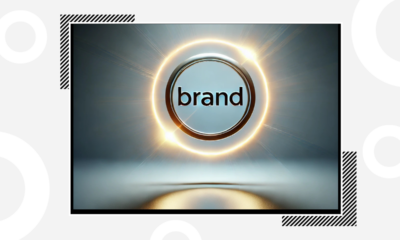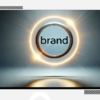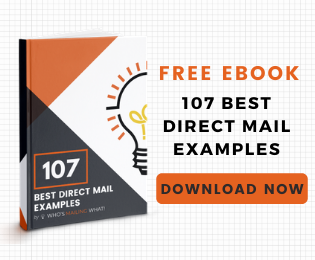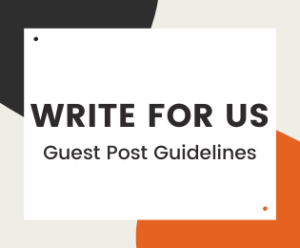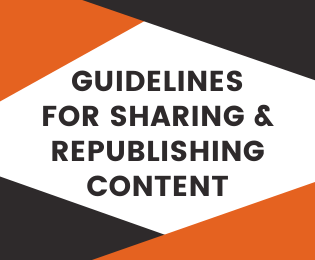HOW-TOS
How to Convert Your Prospects to Customers Using a Multi-Channel Approach [+ 3 Sample Sequences]
A multi-channel approach allows prospects to discover your brand in a way that they find the most convenient. We hope that the sample sequences featured in the article can help you explore and add different channels to your outreach strategy.
Previously, we discussed how you can turn leads (you found through WMW!) into clients using Linkedin as the primary outreach channel. However, we did not rely on Linkedin alone to reach out to prospects. We tried and tested the effectiveness of emails, LinkedIn Connection requests, LinkedIn InMail, and different types of Linkedin ads as well. Our goal was simple: Devise a multichannel outreach sequence that aligns with the business goals of direct mail (DM) service providers like you.
Based on our findings, we narrowed down three high-performing sequences to help establish contact with prospects and persuade them into a long-term engagement with your firm. Let’s dive in!
What We Did
Once you’ve identified relevant prospective clients, the obvious next step is finding the right person to talk to. You’re looking for the decision-maker, a person (or a group of persons) in charge of taking a call on the DM service providers that the company engages with. These are the same people we reach out to when we are looking to acquire new subscribers, and, as a result, WMW! continues to be the trusted source for contact details of decision-maker(s) that you are interested in pursuing.
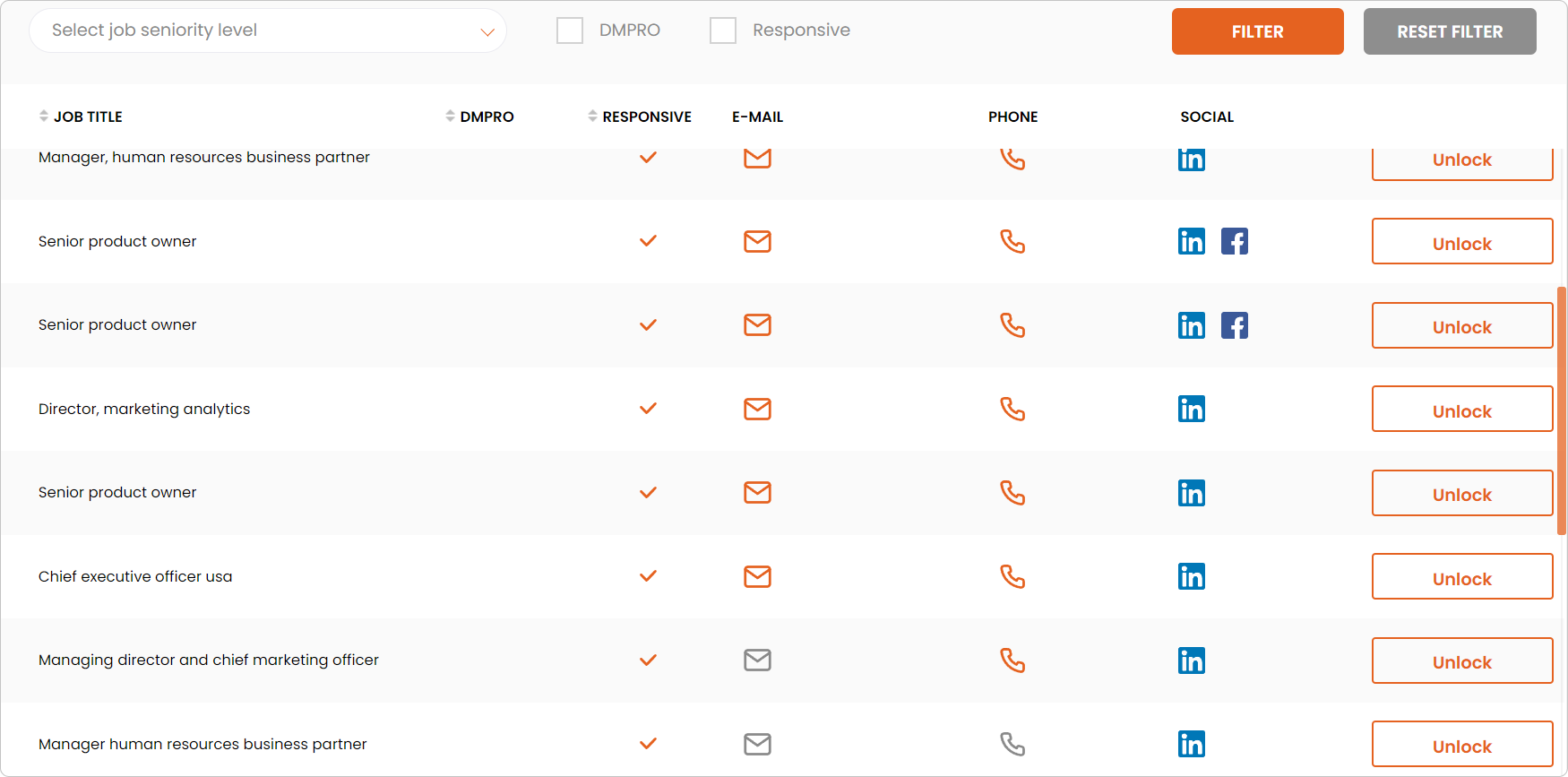
We employed an account-based marketing strategy during our exercise, wherein, we used ads alongside emails, calls, and other forms of Linkedin communication to engage with several key decision-makers in the same organization.
There is no one-size-fits-all formula for a successful outreach plan. You must find the right combination of different channels that your prospects are the most receptive to. Depending on your industry, and prospect type, one of the three sample outreach sequences (or potential workflows) in this article can be a game-changer for your outreach strategy.
Sequence #1
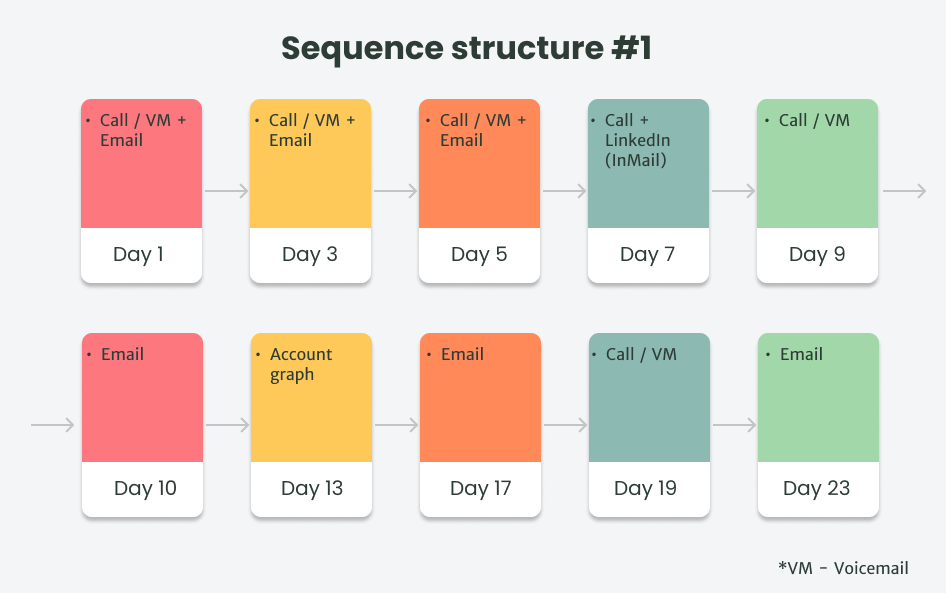
Here are a few email templates that can be easily modified based on your company services, value proposition, and type of audience you’re targeting.
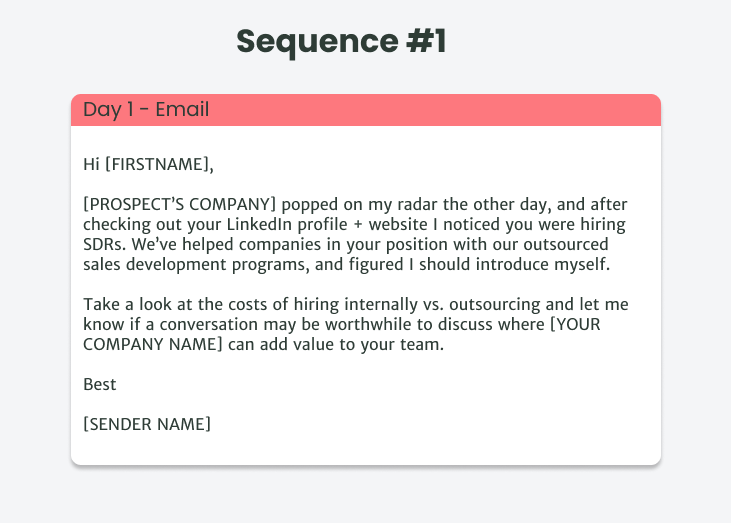

Summary
Compared to other marketing tactics, email has the highest ROI of all communication channels, and therefore, continues to be one the best ways to personally connect with your prospects. While email is an integral part of this sequence, it’s also important to note that around 126 business emails are sent and received every day, which means, decision-makers are receiving more emails than they can possibly go through. Calls suffer a similar fate, and with the advent of caller ID, people are able to filter calls they want to attend to.
When reaching out to prospects for the first time using email (or Linkedin InMail), ensure that your message aligns with the readers’ primary interests and is accompanied by a clear, persuasive call to action. As an agency or printer, you can capitalize on this opportunity by attaching statistics about competitors in the industry and sharing creatives they are using in promotional campaigns. WMW! makes this easier; you can identify prospects (and companies similar to the prospects), review their previous and ongoing campaigns, and bring these insights up later in the conversation. For example, a real-estate business working on their next DM campaign will benefit greatly from looking at DM creatives that their competitors seem to be having the most success with.
In this sequence, an email or a Linkedin InMail is sent after every call to ‘nudge’ the prospect in the right direction. Before picking up the phone, remember to run a quick background check on the decision-maker you will be speaking to. Details like job title, career trajectory, common connections, recent competitor announcements, and conferences/networking events they have attended can help you establish a rapport early on. You can also review their company’s direct mail campaigns on WMW!, and learn more about the key USPs (unique selling propositions) of their offerings.
Remember to check your CRM to note any previous engagement that your prospects might have had with the company. If you’re making follow-up calls, keep a track of what you talked about last time and what your agenda is for this interaction to drive the sales process forward.
Sequence #2
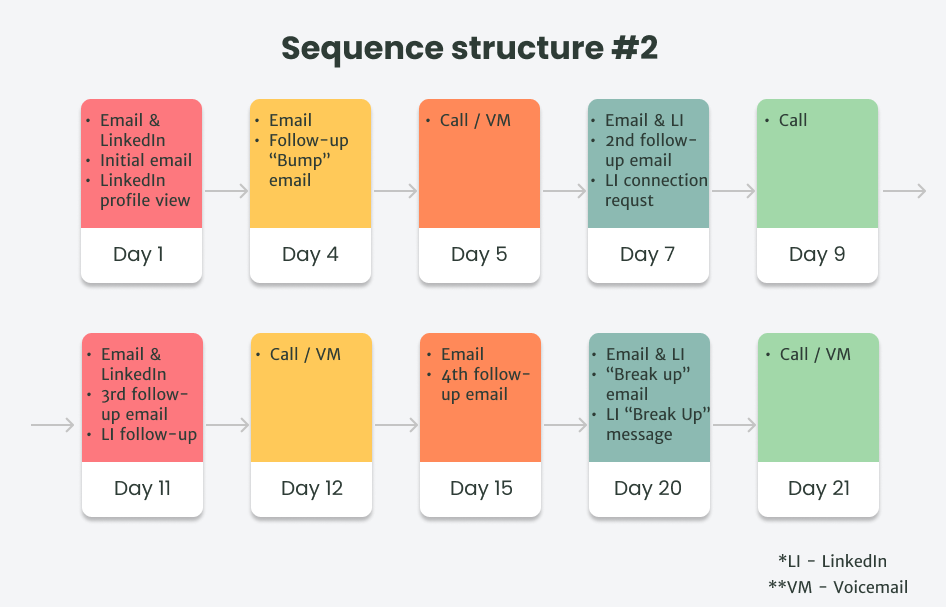
These templates can be easily modified based on your company services, value proposition, and type of audience you’re targeting.
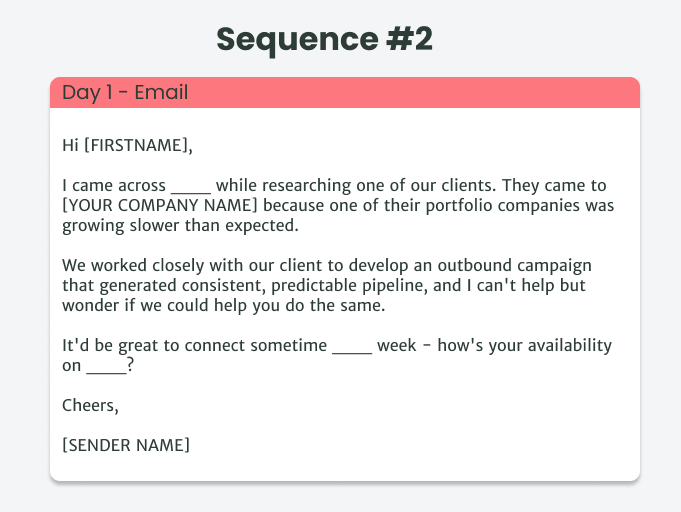
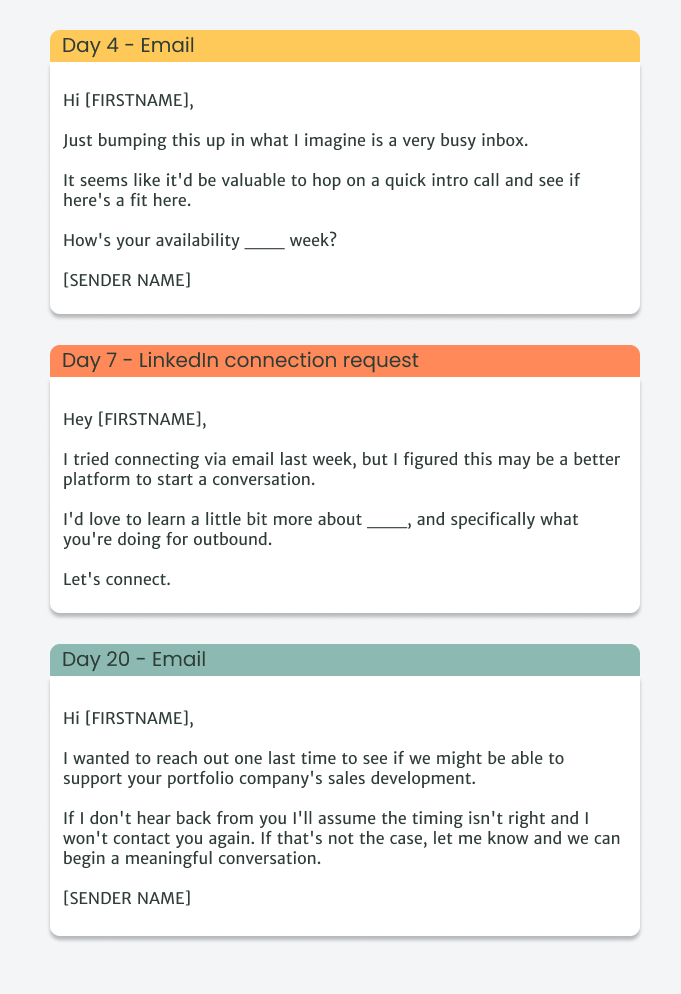
Summary
Many outreach sequences rely on calls to drive results, however, this sequence combines emails with Linkedin Social Touches and calls. There’s a healthy 4x4x4 mix of the three spread across 3 weeks, which is long enough to make a lasting impression without overdoing a particular channel. Here, the email copy doesn’t need to be as innovative, simply because the sequence relies on three different outreach channels to engage with the prospects. Calls facilitate real-time, one-on-one interaction that tends to be more personal, therefore, emails can act as a reminder for calls you have already made.
When reaching out to people on Linkedin, whether it’s a simple connection request or an InMail, you must update your personal and company profile to establish credibility. Remember, Linkedin frowns upon automated outreach sequences, and has parameters in place to recognize human behavior. It’s best to limit your outreach attempts to prospects who actually stand to benefit from your services, and will see the relevance in your messaging.
Another handy little tip for Linkedin is to always have a strong opener accompanied by a relevant attachment to get the prospect’s attention when you’re sending an InMail. For example, a message like, ‘Have you checked out the new postcard from [Competitor X]?’ with an attached creative from the WMW! collection is likely to get noticed. Here, you’re not only sharing relevant information with the prospect but also proving that you did your homework about them (and/or their company) before planning outreach.
Finally, when nothing works, a straightforward, break-up email (or Linkedin message) can turn the sails in your favor. Often, prospects are busy with day-to-day business operations and haven’t prioritized looking into the services you are offering, in which case, a break-up email creates a sense of urgency to respond. Bryan Kreuzberger, Founder and CEO of Breakthrough Email, discovered that when his second or third follow-up messages get ignored, a break-up email serves as a final wake-up call and has a 76% response rate.
Sequence #3
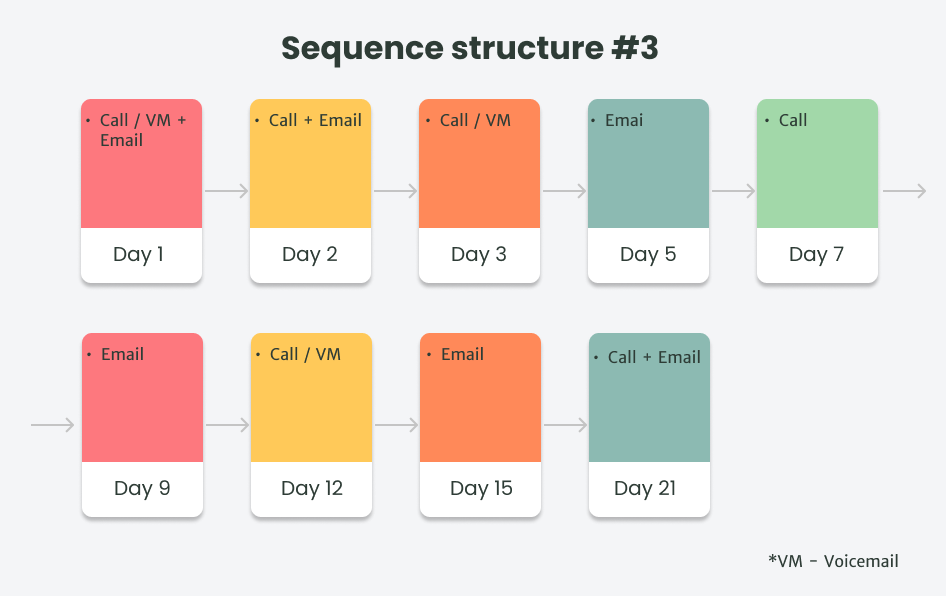
These templates can be easily modified based on your company services, value proposition, and type of audience you’re targeting.
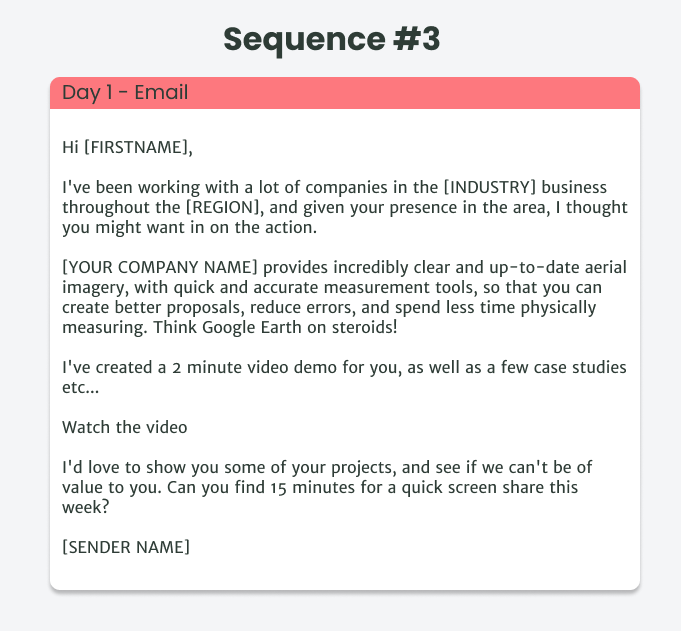
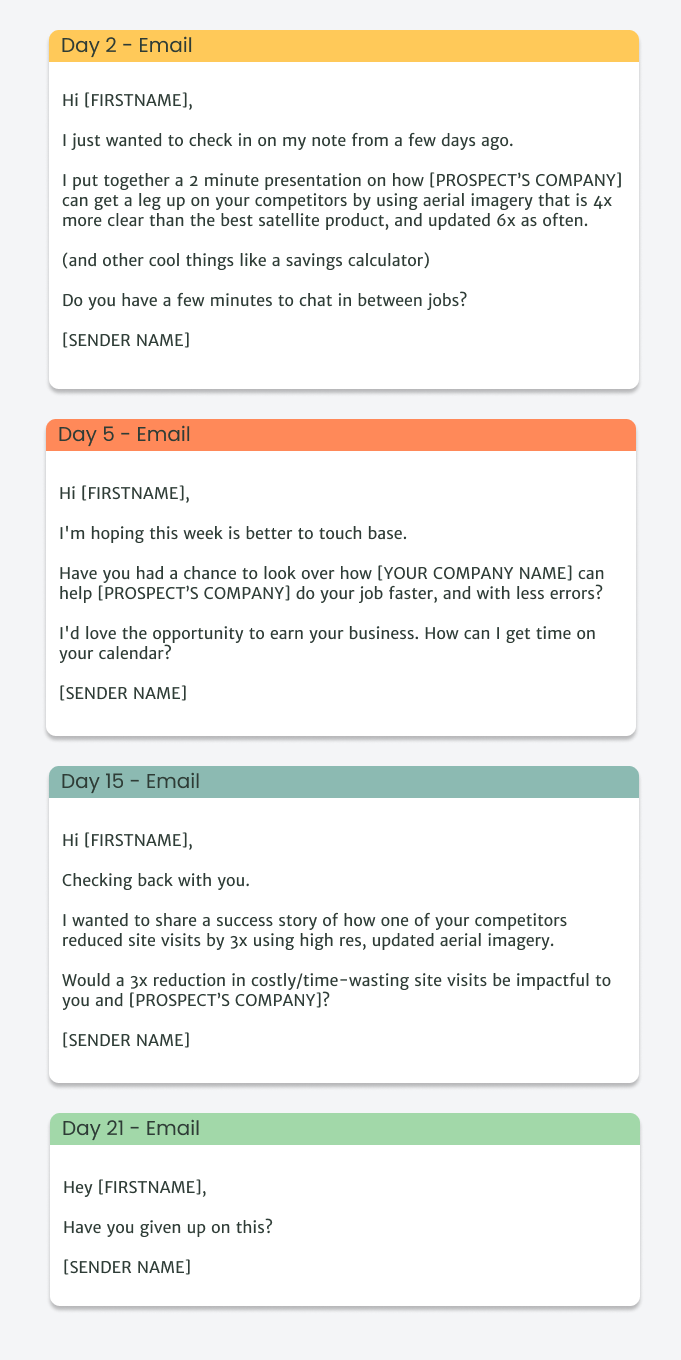
Summary
Spanning three weeks, this outreach sequence makes 12 attempts (6 emails and 6 calls) to elicit a response from prospects. What makes this sequence effective is that from the get-go, the email is quickly followed up by a call — a strategy that works when you are aiming to target multiple prospects at the same time.
Here, the emails can be simple, direct, and feature examples to build context; you can use visual assets like a video, a presentation, and/or a savings calculator amongst other things to emphasize your offerings. For example, you can show the most popular direct mail options in the prospect’s industry vertical and end the email with a question like, ‘Do you want to create successful DM campaigns like these? Discuss your requirements with our sales representative to get started!’
Similar to the previous sequence, your Day 21 email can be a break-up email that jolts the prospect into action.
Check out more email templates here.
Final Thoughts
Around 72% of the customers prefer connecting with brands through multiple channels before making a purchase, and therefore, it comes as no surprise that multi-channel campaigns observe a 24% increase in ROI. It’s important to remember that not everyone actively responds to emails or has a Linkedin, in which case, a multi-channel approach allows prospects to discover your brand in a way that they find the most convenient.
Multi-channel marketing also gives you ample opportunity to take risks and test the next big thing, during which, if one channel comes to a standstill, you still have other channels to broaden your reach and boost campaign performance. As a result, companies that use 4 or more channels for outreach deliver 300% better results than the ones taking a single or dual-channel approach.
When you’re an agency searching for active print mailers, a printer searching for companies that send direct mail, or simply a data vendor looking to supply mailing lists, a multi-channel strategy works for everyone. We hope that the sample sequences featured in the article can help you explore and add different channels to your outreach strategy.







